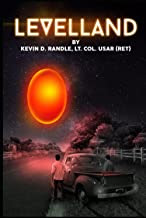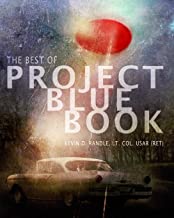Yes, I have returned from Roswell, my first visit there in nearly fifteen years. The town has grown quite a bit and it is surprising the number of new, top line hotels, franchise operations and the improvements to the city. The UFO business has been very good.
The UFO Festival, held over the Fourth of July weekend, which is the anniversary of the crash so many years ago, is a well planned and well executed event. The speakers and presenters cover the range of those inside the UFO field from abductees and abduction researchers, to UFO investigators to those who have had some kind of spectacular UFO sighting. And this doesn’t even mention the TV and movie stars who attended including Roy Thinnes of The Invaders (in color).
I arrived in mid-afternoon on Friday and found my table, in the museum where I could attempt to sell a few books and DVDs. I was paired with Robert Salas of the nuclear weapons intrusion fame. He is a retired government employee who served in the Air Force as a captain (but then who didn’t... which is just my way of saying that I had once been a captain in the Air Force, too).
The next day I managed to offend him but in this case actually proves the adage that no good deed goes unpunished. I had been joking with those circulating through the area, talking with them and not really pushing the books. A couple of people had asked the prices and I was explaining the charges and pointed at Salas’ single book to give the price.
He snapped, “I’m getting really tired of that.”
I thought it a somewhat unprofessional thing to say in front of those people but let it slide until they had moved on and we had a momentary break. I said that I had just been trying to help by directing their attention to his book, but he said that he didn’t need my help.
About thirty minutes later I went to lunch and when I came back, I was preparing for my presentation. I kiddingly said a couple of things (though I was sort of annoyed at his earlier outburst) about what had happened. When I returned from the presentation he’d taken his books and found another location, which meant I had the table to myself. That was fine with me.
Of course, while I was interviewing a very nice woman about her involvement with the Roswell crash, Salas was quick to join our private conversation and take over. Some of the questions he asked were those that I wanted to ask anyway, but he did just butt in. I said nothing to him about that, either in front of the woman or after she was on her way.
Salas, it seems, likes to be the center of attention. I had unknowingly taken that from him as I talked to those who had come to our table. But then, it is also true that some people have no sense of humor... and mine is sometimes a little over developed.
Anyway, I gave my presentations (there were two of them) without interruption or trouble (other than kicking the power cord out of the computer so it went into hibernation mode.) We got that fixed in minutes and I went right back into the presentation.
The museum had multiple presentations going on from nine to five or six but the highlight might have been the Roswell researchers panel held on Saturday night. Stan Friedman, Tom Carey, Don Schmitt, Frank Kimbler and I shared the stage talking about how we had been dragged into the Roswell investigations. (The people from the left are Kimbler, me, Schmitt, Carey and Friedman. Photo courtesy of Alejandro Rojas at www.openminds.tv/top-ufo-roswell-researchers-728/.)
The room was packed and there were people standing outside on the sidewalk waiting for an opportunity to get in. We all talked about how we became involved in the case and some of the side, often funny experiences we’d had in working the case.
Frank Kimbler told of his experiences in using a metal detector and other search techniques in an attempt to locate anything left over from the crash in 1947. I mention this only because people are always asking if we have ever attempted that and the answer was “Yes.” Included in that were archaeological site survey techniques and other accepted practices in an attempt to locate material of significance.
I provided a number of programs on my experiences as a UFO investigator going back to my high school years. At that time, when I interviewed my first witness, I had but one question that was important to me. I asked her if the object had been distinct or if it had been fuzzy. She told me it was about 200 feet over the barn and it looked quite solid.
By Monday, I was getting worn out. Right next to me was display that included the Headline Edition of ABC News which was a report on the UFO crash. It started with a number of loud beeps and never quieted down. It seemed to me that the moment it ended, someone else would push the button and it would start all over again.
That’s not to mention a rather impressive flying saucer display that went off with a roar every fifteen minutes or so, complete with smoke pouring out the bottom. That was a conversation stopper but it was also becoming tiring after three days of watching it.
Tom Carey and I went to lunch Monday (early because I was getting tired) and then, because of a report of something (alien bodies to be precise) buried on the outskirts of town, we went to look for that. The story was that we would find to headstones near a wall. It took us about fifteen minutes to find the location and then another fifteen to find the stones. Later, with digging equipment (read shovels here) others went out, but they found nothing alien buried.
No, I didn’t go to some of the other venues. There were all sorts of vendors selling everything from T-shirts to cold drinks. There were some tours and space related exhibits, but I spent most my time in the museum.
![]()
I did have breakfast every morning with Roy Thinnes (seen here), which was interesting and we went to dinner one night. That included Tom Carey and Don Schmitt. Other nights the three of us, Carey, Schmitt and I went to dinner without Thinnes (the Golden Corral if you must know because they have a very nice salad bar, vegetable bar and desert bar.)
I did talk to Stan Friedman on a couple of occasions. He made it clear that he believed that Robert Willingham was being less than candid about his UFO experiences, but that didn’t affect the MJ-12 papers. Carey wondered why he would bring that up one morning and I told him about Willingham being the only witness to the Del Rio UFO crash (and there will be more on this in a later posting).
Monday night there was a very nice little dinner in the museum for those of us who had done programs and for the staff who had worked so hard to make the Festival a success. The people behind the scenes, who make sure the rooms are cleaned, the equipment is in place and working, that the gift shop is manned, that the guests (meaning not only the speakers but all those who came to learn a little more about UFOs) were helped as needed, and that a thousand other little things were ready, were there to mingle with the rest of us. I hesitated too long and only managed to get one slice of pizza, but it was a good slice.
I blew out of town early on Tuesday morning for the long drive home. I hit no storms (and was told it hadn’t rained in Roswell since October), but did pass one SUV that was engulfed in flames. No one had been hurt and the ambulances and fire trucks were near so they had all the help they needed.
![]()
For me, and I sure for many others, the Festival was well worthwhile. I met some nice people, renewed a couple of old friendships, and wasn’t at all surprised that Travis Walton didn’t even say “Hi,” back to me. He had obviously read The Abduction Enigma and probably wasn’t too happy with our take on alien abduction.
Julie Shuster (seen here) has done a fine job of keeping her father’s vision of the museum alive. Walter Haut had told me long ago that he wanted to encompass everything in the UFO field, not just a narrow niche of Roswell or crash retrievals. He wanted all points of view covered, even those with which he might have disagreed including those of the skeptics. The museum reflects that vision. It covers quite a bit, even those things with which I disagree but that’s what makes this a good museum. It’s not just the one point of view, but many.






















